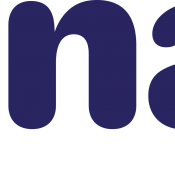Snag Report: Summer Hiring Expect to be Strongest in Decade (Infographic)
3 Min Read By Snag
Snag (formerly Snagajob) released its 10th annual Summer Hiring Survey. Findings revealed that the overwhelming majority (95 percent) of surveyed employers are adding more shifts this summer and more than half (58 percent) plan to hire more summer workers than last year. This parallels the continued and steady climb of U.S. jobs over the past decade. Most employers (82 percent) plan on filling all seasonal summer positions by May this year, up from 71 percent in 2017. The survey, conducted in March with 1,000 employers, also showed that more than a third (38 percent) of employers have already completed their hiring as of the end of April, compared to 27 percent in 2017.
Wage growth is super important but on its own not enough to combat the staggering underemployment that still persists in America.
With record low unemployment at 3.9 percent, employers are vying to stay competitive with more employers willing to offer the maximum hourly wage they feel their business can afford (46 percent in 2018 versus 31 percent in 2017) rather than the minimum required by law (12 percent in 2018 versus 18 percent in 2017). A result of this is that 74 percent plan to pay an hourly wage of at least $11, compared to last year when only 53 percent of employers planned to pay the same or more.
“We’re thrilled to see nearly all employers are adding extra shifts this summer on top of hiring more hourly workers. This is doubly good news because it likely indicates that current employees are getting more hours,” said Peter Harrison, CEO of Snag. “Wage growth is super important but on its own not enough to combat the staggering underemployment that still persists in America.”
While summer hiring is substantially up with 58 percent of employers expecting to hire more seasonal employees this year, the pace of growth has decelerated slightly. Last year, 67 percent of employers expected to hire more seasonal workers. On average, employers anticipate new hires will make up nearly a quarter (23 percent) of their summer workforce versus 41 percent in 2017. There has also been a giant surge in interest for on-demand workers with 81 percent of employers planning to utilize on-demand workers within the next 12 months, up from 62 percent last year and 31 percent year-over-year.
Employers plan to try different strategies to help attract and retain quality talent for the summer months. Snag’s survey showed employers are offering more full-time opportunities, health care and PTO benefits. This is consistent with what hourly workers want. According to the company’s State of the Hourly Worker report, more job seekers are focused on full-time work and are looking for jobs with paid time off, health insurance and 401K packages. Since 2015, Snag has seen a 43 percent increase in full-time job searches and a 27 percent decrease in part-time job searches.

Roughly 25 percent of summer job applications in 2017 were submitted by Gen Z. To keep up, employers are becoming more mobile friendly. Nearly one in two employers (43 percent) are now texting applicants to schedule interviews. Surprisingly, the data reveals a drop (41 percent) in job posts on social media platforms.
“One has to imagine the privacy issues with social media in the news has had some bearing on the massive decline in social media job posts. There’s more negative sentiment out there today than there was even 60 days ago,” added Harrison.
Additionally, the report uncovered an uptick in E-Verify, which confirms the identity and employment eligibility of job applicants. Nearly 40 percent of employers plan to use E-Verify to evaluate summer applicants, up from 25 percent last year.
“Given the current political environment and noise around immigration and non-citizenship status, employers are clearly being more cautious,” stated Harrison. “Yet, at the same time, we’re seeing a decline in background checks and reference checks likely due to employers feeling the pressure to hire more seasonal workers.”
Additional findings from the survey include:
- Even with low unemployment, employers aren’t worried about getting enough applications this year. In fact, 60 percent anticipate getting more summer applicants than last year.
- Employers anticipate one in five (21 percent) of their summer workforce will be made up of rehires compared to 26 percent in 2017.
- Employers are using mobile or app-based applicant tracking systems (ATS) more than in the past. Usage increased 167 percent year-over-year.
- The majority of employers (90 percent) use technology and automation to complete certain employee tasks, yet nearly 70 percent don’t expect it will impact the number of summer staff they plan to hire.



